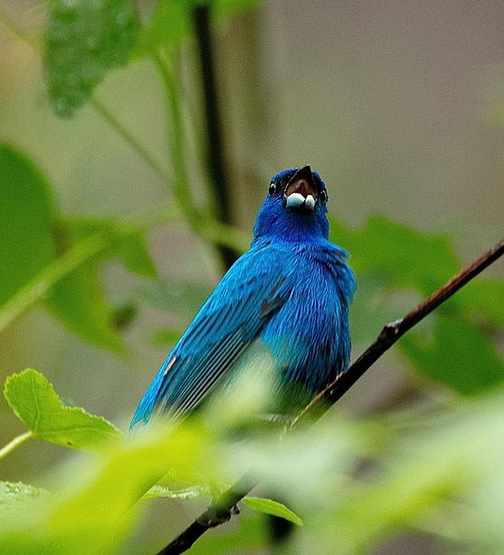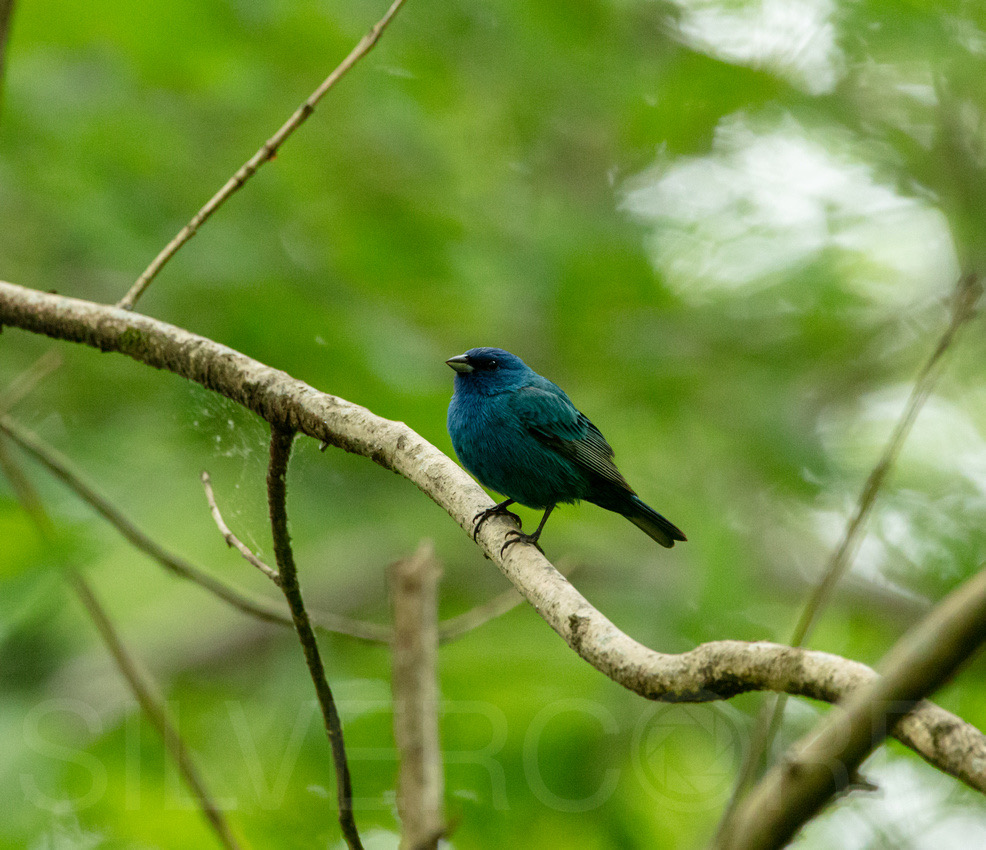Check out this handsome fellow singing his heart out at Yates Mill Park in Raleigh, NC.
It’s an Indigo Bunting!
This species is one of the most vibrantly colored birds we’ve got here in North Carolina.
They are normally spotted from April to October and can be found in wide open fields which contain a few tall trees with scrub brush mixed into the grass.


Indigo Buntings are named for their deep blue color that makes them look like they’ve been dipped in indigo dye, yet they are actually dressed in black plumage.
Though they may look colorful, it’s a trick of the light which gives them this boldly hued appearance.
How can this be?
The secret to their incredible colors lies in their unique feather structure which diffracts sunlight to show only a visible blue wave length.
And because the blue is a light show rather than true pigmentation, depending on the angle or quality of the sunlight the Buntings can appear to have several shades of the blue color ranging from aqua to cobalt showing in it’s feathers.
Pretty neat huh?
🙂
Photos by @sally_siko of @birdwatching_nc on the badassssss full frame beast of an SLR, the mighty @canonusa
#5Ds


